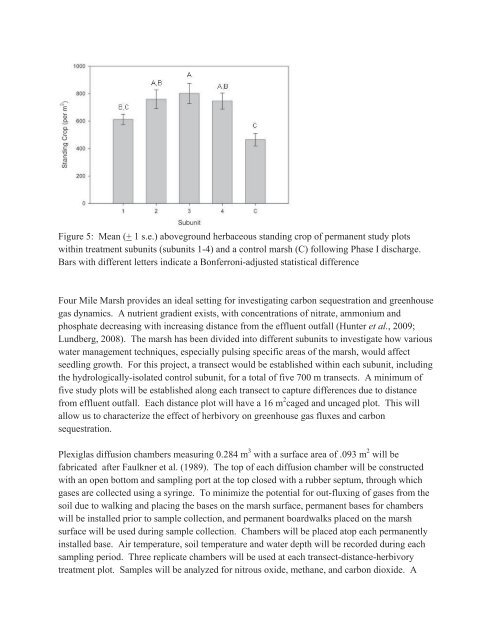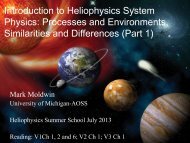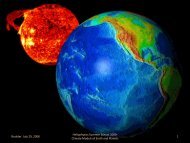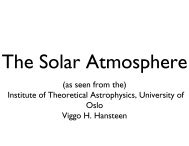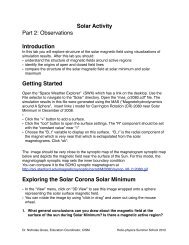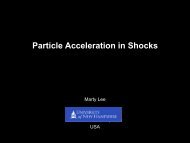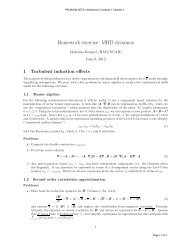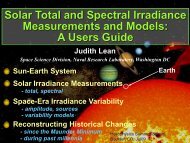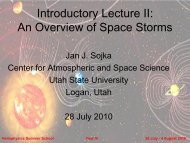Figure 5: Mean (+ 1 s.e.) aboveground herbaceous standing crop of permanent study plotswithin treatment subunits (subunits 1-4) and a control marsh (C) following Phase I discharge.Bars with different letters indicate a Bonferroni-adjusted statistical differenceFour Mile Marsh provides an ideal setting for investigating carbon sequestration and greenhousegas dynamics. A nutrient gradient exists, with concentrations of nitrate, ammonium andphosphate decreasing with increasing distance from the effluent outfall (Hunter et al., 2009;<strong>Lundberg</strong>, 2008). The marsh has been divided into different subunits to investigate how variouswater management techniques, especially pulsing specific areas of the marsh, would affectseedling growth. For this project, a transect would be established within each subunit, includingthe hydrologically-isolated control subunit, for a total of five 700 m transects. A minimum offive study plots will be established along each transect to capture differences due to distancefrom effluent outfall. Each distance plot will have a 16 m 2 caged and uncaged plot. This willallow us to characterize the effect of herbivory on greenhouse gas fluxes and carbonsequestration.Plexiglas diffusion chambers measuring 0.284 m 3 with a surface area of .093 m 2 will befabricated after Faulkner et al. (1989). The top of each diffusion chamber will be constructedwith an open bottom and sampling port at the top closed with a rubber septum, through whichgases are collected using a syringe. To minimize the potential for out-fluxing of gases from thesoil due to walking and placing the bases on the marsh surface, permanent bases for chamberswill be installed prior to sample collection, and permanent boardwalks placed on the marshsurface will be used during sample collection. Chambers will be placed atop each permanentlyinstalled base. Air temperature, soil temperature and water depth will be recorded during eachsampling period. Three replicate chambers will be used at each transect-distance-herbivorytreatment plot. Samples will be analyzed for nitrous oxide, methane, and carbon dioxide. A
preliminary study will be conducted to determine the length of time required to determine fluxesof each gas. Additionally, carbon sequestration will be investigated by quantifying rates ofaboveground and belowground productivity, organic matter burial and decomposition at eachstudy site. Statistical analyses would be conducted using a completely randomized 2x5x5treatment arrangement design with replication and non-metric multidimensional scaling. Bycharacterizing greenhouse gas emissions and carbon sequestration, determinations about thepotential of WAWs in carbon banking could be used in public policy decision-making.Literature CitedDay, J. W., Ko, J.-Y., Rybczyk, J., Sabins, D., Bean, R., Berthelot, G., Brantley, C., Cardoch, L.,Conner, W., Day, J. N., Englande, A. J., Feagley, S., Hyfield, E., Lane, R., Lindsey, J.,Mistich, J., Reyes, E. & Twilley, R. 2004. The use of wetlands in the Mississippi Deltafor wastewater assimilation: a review. Ocean & Coastal Management, 47, 671-691.Faulkner, S. P., Patrick, W. H., Jr. & Gambrell, R. P. 1989. Field techniques for measuringwetland soil parameters. Soil Sci Soc Am J, 53, 883-890.Hunter, R., Lane, R., Day, J., Lindsey, J., Day, J. & Hunter, M. 2009. Nutrient removal andloading rate analysis of Louisiana forested wetlands assimilating treated municipaleffluent. Environmental Management, 44, 865-873.Ko, J.-Y., Day, J. W., Lane, R. R. & Day, J. N. 2004. A comparative evaluation of money-basedand energy-based cost–benefit analyses of tertiary municipal wastewater treatment usingforested wetlands vs. sand filtration in Louisiana. Ecological Economics, 49, 331-347.<strong>Lundberg</strong>, C. J. 2008. Using secondarily treated sewage effluent to restore the baldcypress-watertupelo swamps of the Lake Pontchartrain Basin: A demonstration study. M.S.,Southeastern Louisiana University,71 p.<strong>Lundberg</strong>, C. J., Shaffer, G. P., Wood, W. B. & Day Jr, J. W. 2011. Growth rates of baldcypress(Taxodium distichum) seedlings in a treated effluent assimilation marsh. EcologicalEngineering, 37, 549-553.Reed, D. & Wilson, L. 2004. Coast 2050: A new approach to restoration of Louisiana coastalwetlands. Physical Geography, 25, 4-21.Shaffer, G. P., Sasser, C. E., Gosselink, J. G. & Rejmanek, M. 1992. Vegetation dynamics in theemerging Atchafalaya Delta, Louisiana, USA. Journal of Ecology, 80, 677-687.Shaffer, G. P., Wood, W. B., Hoeppner, S. S., Perkins, T. E., Zoller, J. & Kandalepas, D. 2009.Degradation of baldcypress-water tupelo swamp to marsh and open water in southeasternLouisiana, U.S.A.: An irreversible trajectory? Journal of Coastal Research, 152-165.Thomson, D. M., Shaffer, G. P. & Mccorquodale, J. A. 2001. A potential interaction betweensea-level rise and global warming: implications for coastal stability on the MississippiRiver Deltaic Plain. Global and Planetary Change, 32, 49-59.


